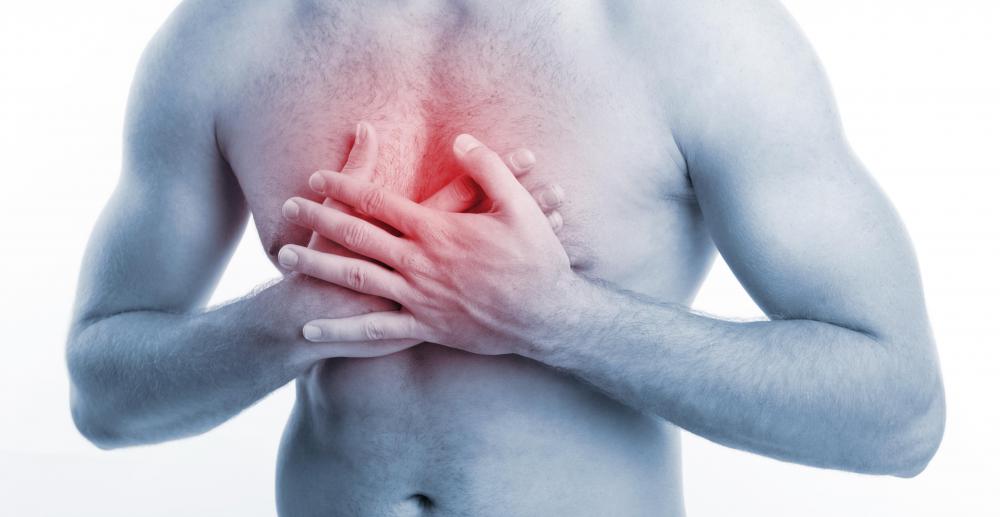At WiseGEEK, we're committed to delivering accurate, trustworthy information. Our expert-authored content is rigorously fact-checked and sourced from credible authorities. Discover how we uphold the highest standards in providing you with reliable knowledge.
How do I Tell the Difference Between a Heart Attack and a Panic Attack?
A heart attack and a panic attack have very similar symptoms. For example, an individual may feel pain in his chest and be short of breath during both of these. The type of pain, however, is often different, and shortness of breath during a panic attack can often be controlled. A panic attack and a heart attack are also typically caused by different things.
One of the most common symptoms of a heart attack is chest pain. During a heart attack, this pain is often quite severe, and many times it will feel like a constant, crushing pressure. Chest pain can radiate to other parts of the body during a heart attack, including the back, neck, and left arm. Sometimes there may also be numbness or tingling.

The severity, type, and location of chest pain is one of the major differences between a heart attack and a panic attack. In the event of a panic attack, the chest pain is usually an intermittent stabbing pain that is less severe than pain associated with a heart attack. Also, chest pain during a panic attack typically does not spread to other parts of the body.

Shortness of breath is another common symptom of both a heart attack and a panic attack. When an individual experiences this symptom, it is usually very severe. It may feel as though there is an intense weight on his chest. Unlike a panic attack, someone suffering a heart attack can not catch his breath. Fingernails and lips may become pale or bluish during a heart attack because the blood lacks oxygen.
Shortness of breath during a panic attack is often due to the person hyperventilating. During less severe panic attacks, the individual may be able to calm down enough to catch his breath. Other times, he may have to breathe into a bag.

A heart attack and a panic attack are generally have different causes. Before a heart attack, an individual will often be partaking in some type of strenuous physically activity such as running or climbing stairs. Individuals who are experiencing a panic attack, on the other hand, are usually in a particularly uncomfortable, stressful, or frightening situation.

Other similar signs indicating a heart attack and a panic attack include sweating, and a racing heart or heart palpitations. Since symptoms may differ from person to person, prompt medical attention is advised if an individual suspects he may be suffering from a heart attack. Only a physician can positively rule out the possibility of a heart attack. Sometimes individuals with these symptoms may dismiss them, thinking that they are mild enough to be a panic attack when they actually have had a heart attack.
AS FEATURED ON:
AS FEATURED ON:

















Discussion Comments
@Grivusangel -- Glad it was a panic attack and not a heart attack! That happened to my sister once. She was absolutely convinced she was having a heart attack, but it was a panic attack. Her doctor said one good indicator of a panic attack was numbness around the mouth, that this numbness rarely, if ever, happened during a heart attack, so it was a good indicator.
She has used that as a benchmark for these ever since, because she has an anxiety disorder and is prone to panic attacks. So far, this has been a reliable sign that it's a panic attack and not a heart problem.
I can tell you from personal experience that a panic attack can seem awfully close to a heart attack. The chest pain can sure enough localize on the left and the arm can go numb, the pain radiates to the back -- you name it.
I went to the ER with symptoms of a heart attack. Thank the Lord, it was a panic attack. But they hooked me up to an EKG, a heart monitor, drew blood and worked me over pretty thoroughly. It's not an experience I care to repeat.
I have some Ativan and if I feel extremely jittery, I will take half of one. That's enough to take the edge off and calm me down without making me loopy.
Post your comments